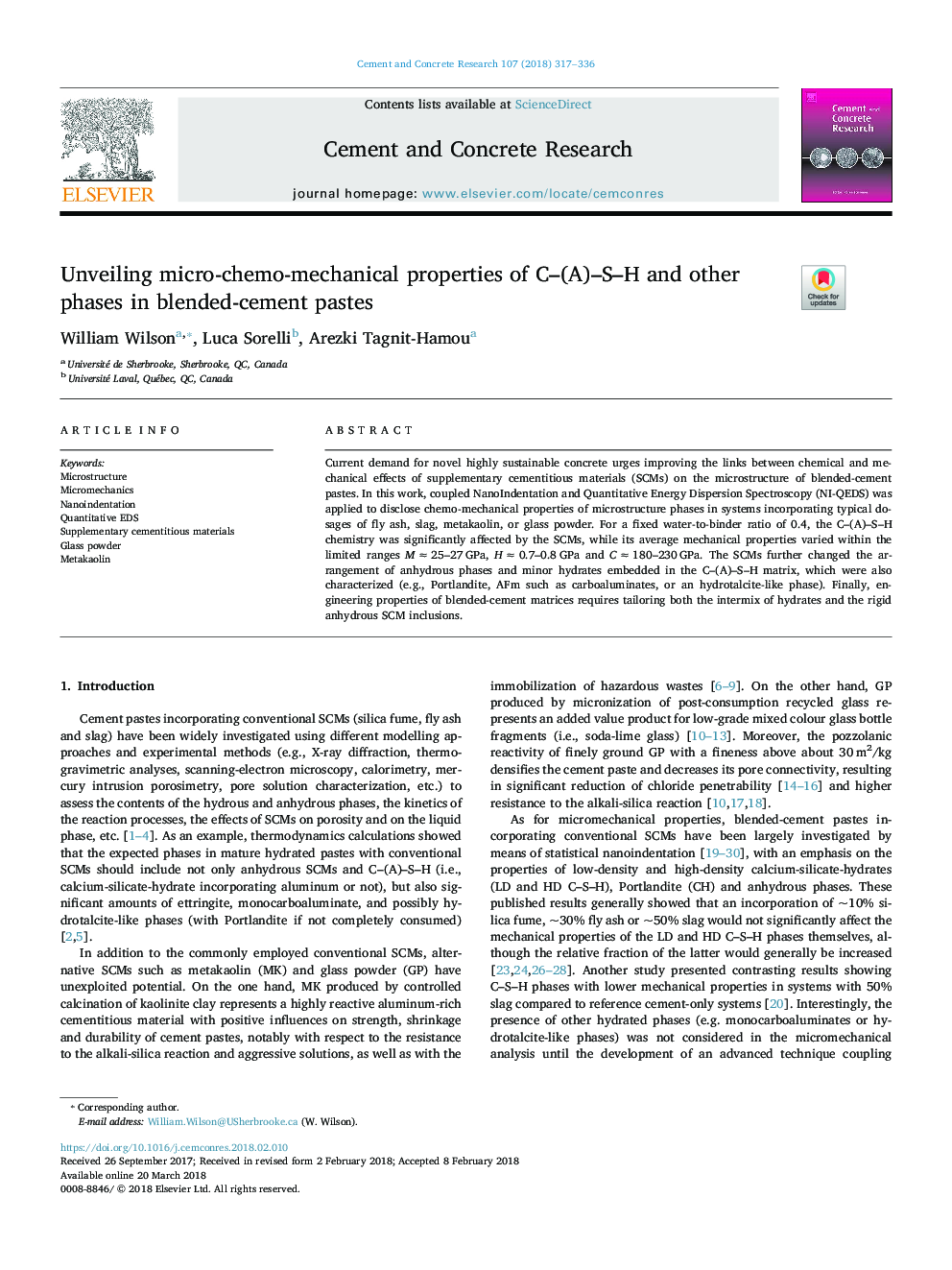| Article ID | Journal | Published Year | Pages | File Type |
|---|---|---|---|---|
| 7884814 | Cement and Concrete Research | 2018 | 20 Pages |
Abstract
Current demand for novel highly sustainable concrete urges improving the links between chemical and mechanical effects of supplementary cementitious materials (SCMs) on the microstructure of blended-cement pastes. In this work, coupled NanoIndentation and Quantitative Energy Dispersion Spectroscopy (NI-QEDS) was applied to disclose chemo-mechanical properties of microstructure phases in systems incorporating typical dosages of fly ash, slag, metakaolin, or glass powder. For a fixed water-to-binder ratio of 0.4, the C-(A)-S-H chemistry was significantly affected by the SCMs, while its average mechanical properties varied within the limited ranges Mâ¯ââ¯25-27â¯GPa, Hâ¯ââ¯0.7-0.8â¯GPa and Câ¯ââ¯180-230â¯GPa. The SCMs further changed the arrangement of anhydrous phases and minor hydrates embedded in the C-(A)-S-H matrix, which were also characterized (e.g., Portlandite, AFm such as carboaluminates, or an hydrotalcite-like phase). Finally, engineering properties of blended-cement matrices requires tailoring both the intermix of hydrates and the rigid anhydrous SCM inclusions.
Keywords
Related Topics
Physical Sciences and Engineering
Engineering
Industrial and Manufacturing Engineering
Authors
William Wilson, Luca Sorelli, Arezki Tagnit-Hamou,
